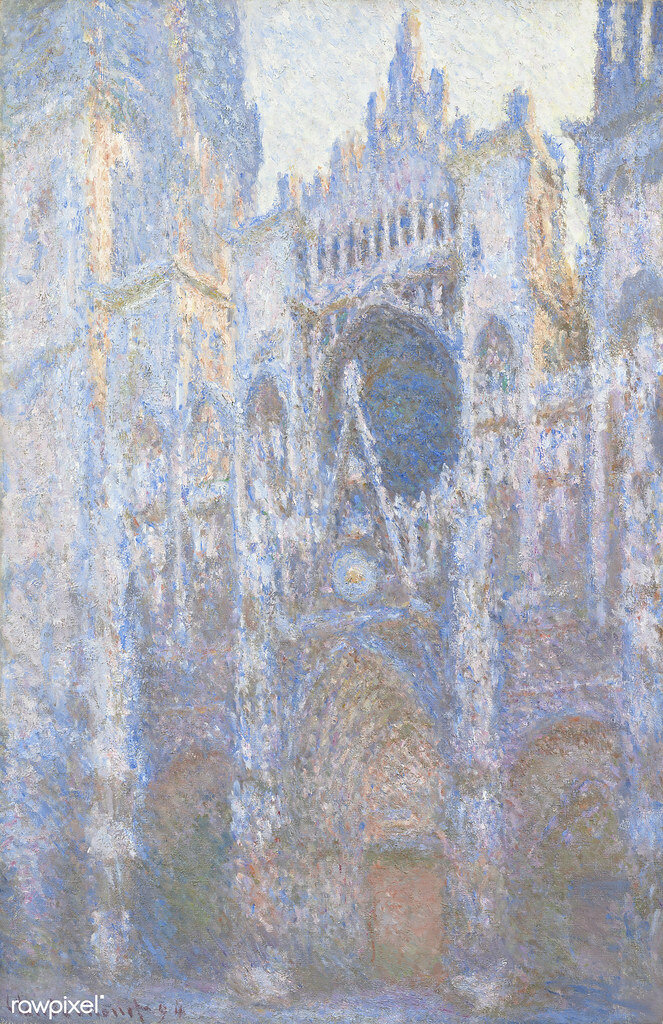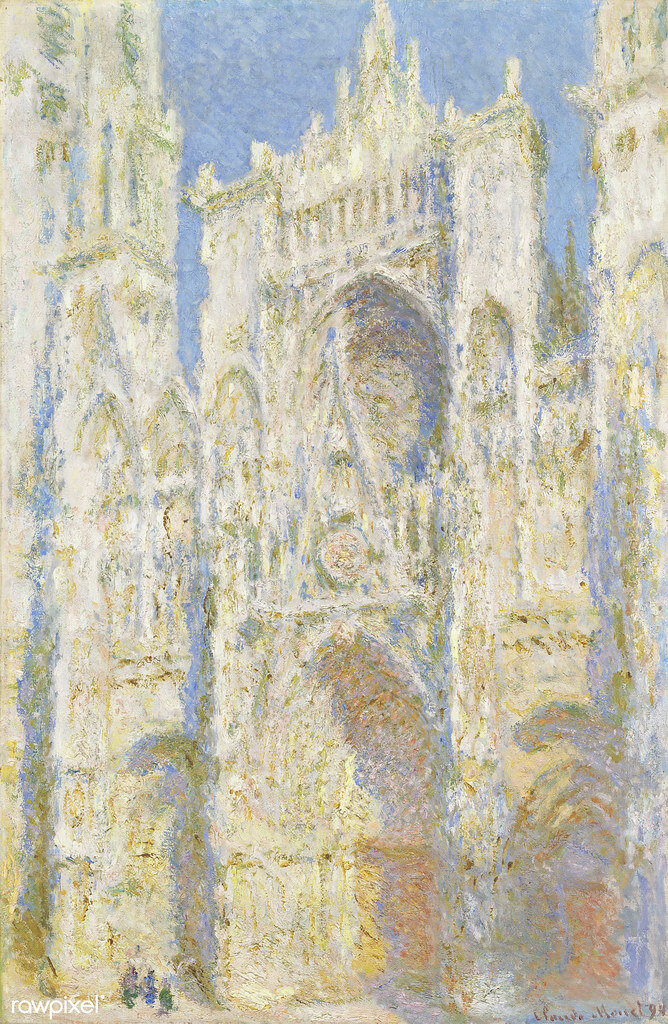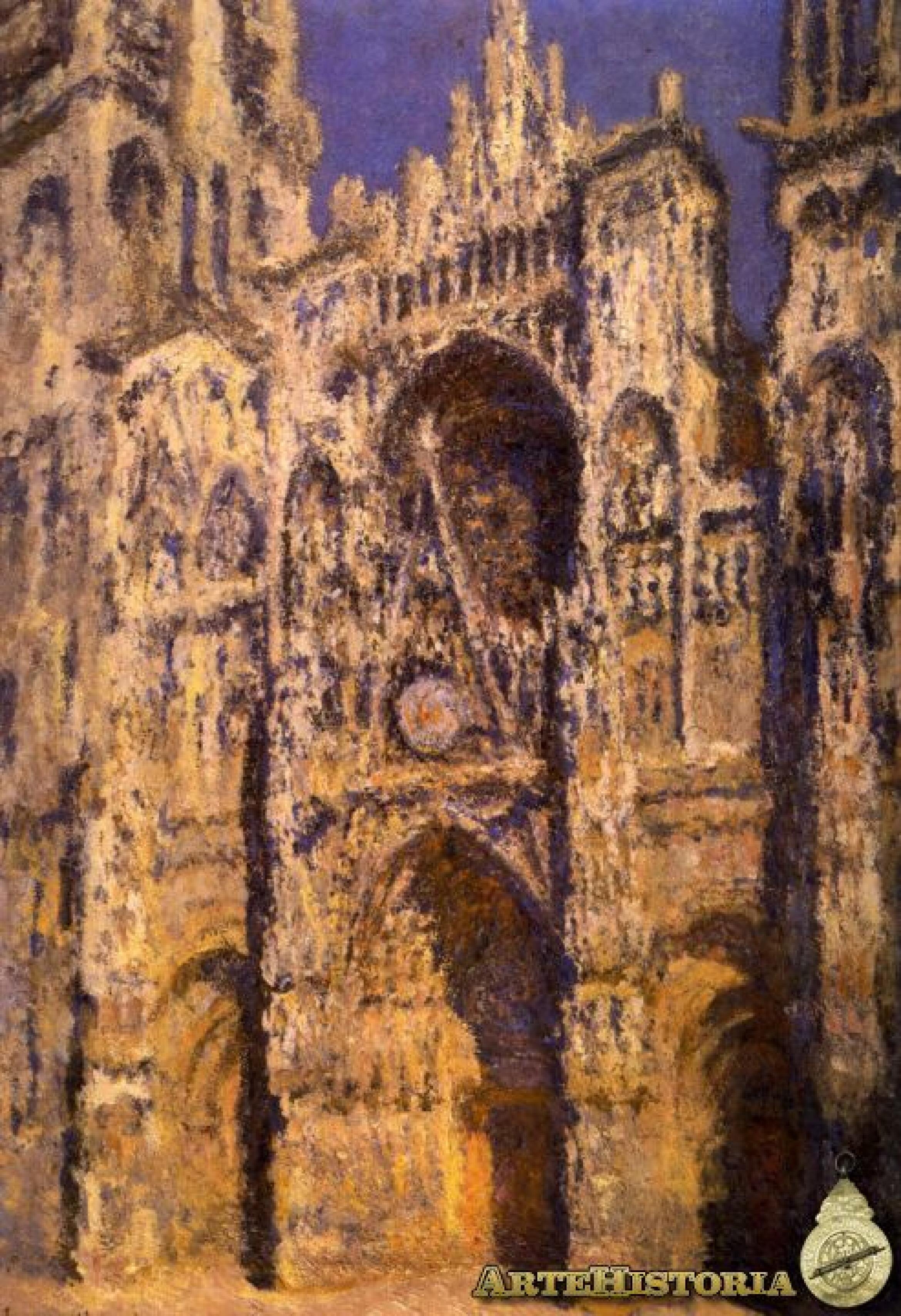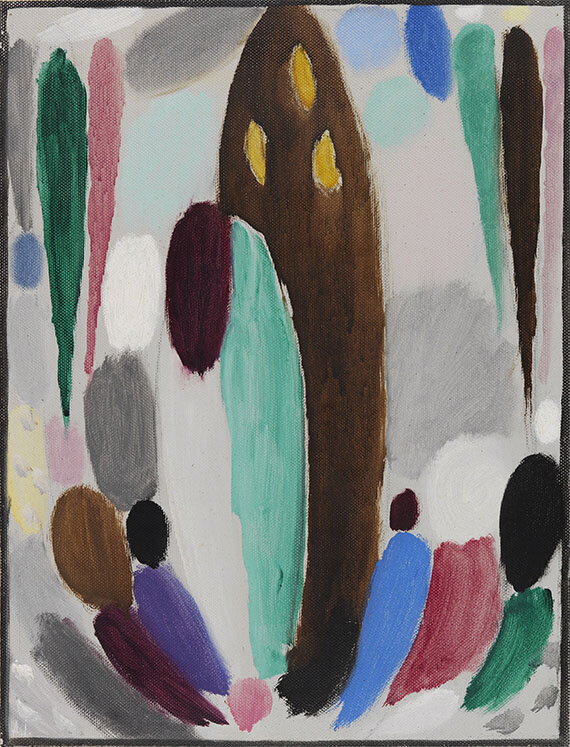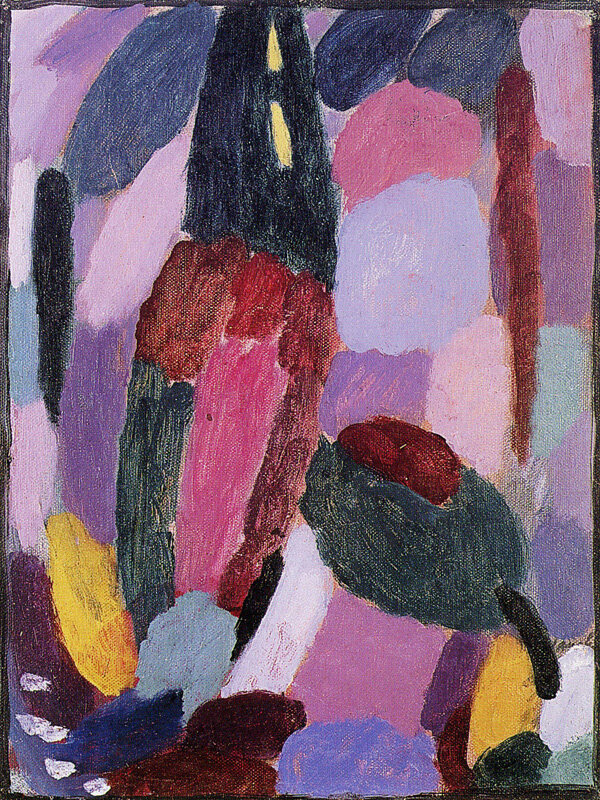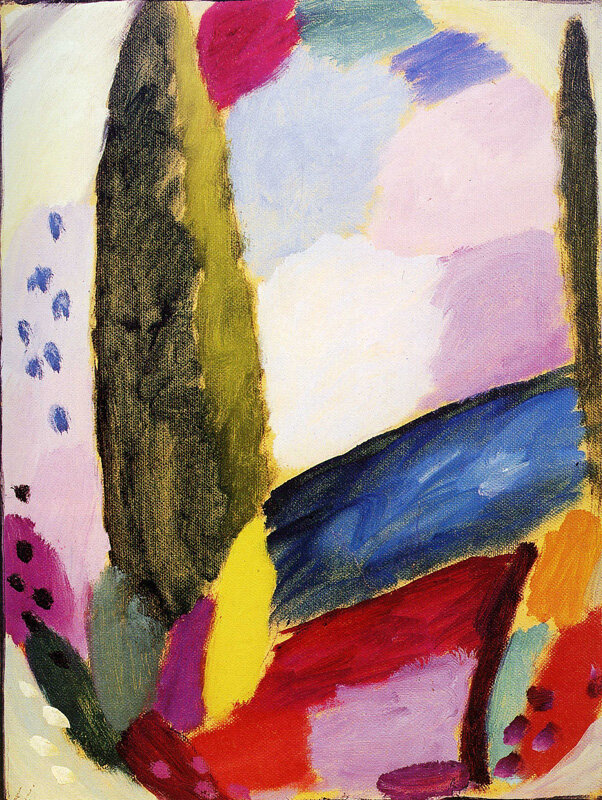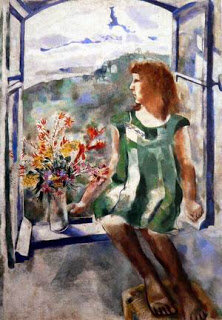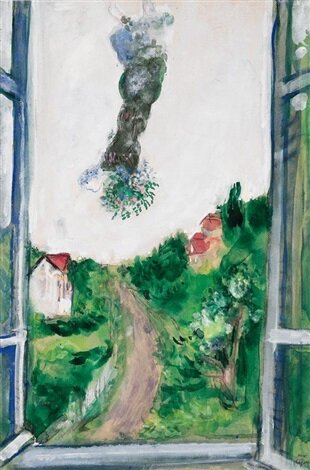Arteterapia en momentos de crisis // Arttherapy in times of crisis - Maya Moussa
“La vista desde mi ventana”
Trabajo personal arteterapéutico para adultos
En épocas de crisis, nuestros pensamientos suelen circular una y otra vez en torno a los mismos temas y tantas veces nos encontramos impotentes ante los hechos que no podemos cambiar.
La actividad artística-terapéutica nos ofrece múltiples herramientas para fortalecer nuestras facultades individuales de poder orientar y dominar nuestro pensar, sentir y querer.
La vista de mi ventana: dimensiones arteterapéuticas desde el interior.
El interior es un espacio que pocas veces exploramos tan a fondo como en estos días de recogimiento obligado. Nuestro mundo interior individual, pero también nuestro entorno interior, nuestros espacios a los que tanto nos hemos acostumbrado, guardan aún muchos misterios por descubrir.
Desde el trabajo arteterapéutico buscamos la vivencia, la actividad, la sorpresa. Son posibilidades que ante todo nos pueden ayudar a recuperar la gran capacidad del asombro que muchos adultos hemos ido perdiendo a lo largo de la vida. Hemos aprendido a tener explicaciones lógicas para todo, y en cuanto nos encontramos ante algo inexplicable estamos perdidos.
Podemos aprender mucho de los grandes artistas, que tenían siempre esta actitud abierta al milagro y las maravillas en lo cotidiano. Aquí podemos encontrar un camino personal, desde lo común y ordinario a recuperar el asombro ante lo sencillo.
Para ello, muchas personas acuden a la meditación. El cada vez más popular movimiento del «mindfulness» es muy positivo en este sentido, se parece un poco a los ejercicios preliminares para el desarrollo de la consciencia de Rudolf Steiner.
Otro punto de partida para practicar una actitud consciente y hasta meditativa desde la actividad artística puede resultar más accesible en la realidad que están viviendo muchas personas en este momento.
Nuestra muy querida maestra Eva Mees (1925-2009) nos ha compartido muchas ideas basadas en la percepción de lo cotidiano. Se trata de honrar, de apreciar y percibir con más consciencia. Para personas adultas, que actualmente se encuentran ante grandes desafíos a nivel personal, puede ser de gran ayuda. Por ejemplo la técnica del dibujo figurativo, la observación exacta, actúa sobre la capacidad de percepción objetiva y transmite seguridad interior en un momento que está dominado por sentimientos de angustia, impotencia y frustración. Centrándonos en la observación, podemos ejercitar el dominio de nuestro pensar, controlar los pensamientos recurrentes, que en el fondo ya no queremos tener en la mente pero a los que cuesta apartar. Ayuda a controlar miedos, ya que nos adentramos al espacio y tomamos posesión de nuestro entorno y nuestro interior al mismo tiempo.
Tenemos hermosos ejemplos de Claude Monet, que se retiró durante meses en una habitación frente a la Catedral de Rouen para observar los cambios de la luz y el color. Nos dejó 30 pinturas que comentan de la manera más artística cuanto cambia la luz y la atmósfera todo lo que percibimos.
Alexey Jawlensky en su exilio se encontró con que la única vista que tenía era la de la ventana de su cocina en St Prex : primero lamentaba mucho haber perdido su estudio. Pero las múltiples miradas que le permitieron ver este mismo camino con dos álamos de tantas maneras diferentes, más adelante llegaron a formar la base para desarrollar sus series de cabezas místicas y meditaciones.
Marc Chagall pinta varias veces la vista desde su ventana, en la Provenza de la manera más libre y artística.
Todos ellos nos pueden inspirar a buscar nuestra propia vista, nuestra visión personal del lugar cotidiano. Observemos la luz, las formas, los colores, y sin tener que ser grandes artistas, podemos así desarrollar un gran recurso de fuerza interior que necesitamos en momentos de crisis.
Para desarrollar nuestras fuerzas de imaginación, una vez que hayamos contemplado nuestra vista, el siguiente paso sería ampliar nuestro espacio. Seleccionamos un detalle, algo que nos llame la atención, lo dibujamos, o lo imaginamos muy cerca de nosotros y lo plasmamos según nuestra imaginación. O nos fijamos en el cielo, las nubes, los colores: imaginemos esta misma vista, pero en otra estación del año o en otro momento del día, y pintamos esta imagen interior. O bien transformamos nuestra primera visión de lo simplemente cotidiano, enriqueciéndolo con los colores de la alegría, o de la melancolía, o de la fuerza, o del silencio…La clave de este trabajo está en recrearse en las variaciones de una misma imagen.
Estos ejercicios de atención y transformación de lo cotidiano amplían nuestro espacio anímico ; a través de ellos podemos encontrar más seguridad, más concentración y un pensar y sentir rígido o angustiado puede volverse ágil y llenarnos de serenidad.
Podemos servirnos de las técnicas más diversas, aunque para empezar se recomienda un lápiz de grafito común, después podemos usar lápiz de color, pasteles etc.
Unos ejemplos:
1. Dia de sol
2. Melancolía
3. Noche
Variaciones de las vistas del balcón: reducción al blanco y negro, regreso al color
Son ideas, que pueden ayudar a centrarse y encontrar esta profunda alegría cuando nos sentimos como seres dotados de creatividad. Este hecho nos acerca más a lo bello, lo bueno y lo verdadero.
English translation
“The view from my window” Personal work for adults
In a time of crisis, our thoughts often revolve around the same topic, and many times we find ourselves powerless facing the facts we cannot change.
Arttherapy offers a wide range of exercises that help us to recover our individual skills to orientate and have more control over our thinking, feeling and will.
« The view from my window »: artistic-therapeutic dimensions from inside.
Our interior is a space we usually don’t explore the way we do these days of forced retreat. Our individual inner space, but also our surrounding, our rooms we have got used to, still keep plenty of mysteries to discover.
From arttherapy, we search for experiences, activity, surprise. These are possibilities that in particular can help us to recuperate the great capability of wondering many adults have lost during life. We have learnt to have logic explanations for everything and when we find ourselves confronting something inexplicable we feel lost.
We can learn a lot from the great artists who always were open to the miracles and marvels of everyday life. Here we can find a personal way from the common, the ordinary to regain our capacity of amazement and admiration by facing the simplest object.
To achieve this serenity, many of us meditate. The recent movement of Mindfulness is very positive in this sense, and has some similarity to Rudolf Steiners preliminary exercises for the development of consciousness.
Another approach is to practice a conscious and even meditative attitude by means of artistic activity that may be easier to reach for many people in the reality we are facing at this moment.
Our dear teacher Eva Mees ( 1925-2009) shared many ideas based on the conscious perception of the everyday objects. It is all about appreciation and perception with more consciousness. For many adults who now find themselves in a great challenge on a personal level, this different approach can be very helpful. For example the objective technique of drawing, the capacity of observation can lead to develop inner security in a moment that is dominated by feelings of impotence, anxiety and frustration. Drawing our attention to observation, we can practice and strengthen our control of thinking, of our revolving thoughts, that we really do not want to have in our minds but cannot keep silent. Coming into action helps to control fears, since we enter our space and take over our surrounding and our inner space at the same time.
There are marvellous examples painted by Claude Monet, who withdrew in a room in front of the Cathedral of Rouen for weeks, and left us 30 pictures of the same view that show in a very skillful way how light and atmosphere change everything we perceive.
Alexander Jawlensky in his exile found himself with one single view from the window of his kitchen in St Prex: first he felt sad about having lost his studio. But this variety of ways to contemplate, allowed him to see this same path with its two poplars in such a richness, that later it turned out to be the base for his series of mistic heads and meditations.
c Chagall painted the view from his window in french Provence several times in a very free and inspiring interpretation.
All these artists can inspire us to explore our own point of view, our very personal vision of the everyday place. We can observe the light, the forms, the colours, without having to be great artists, and thus we can reach inner strength we need in these moments of crisis.
To develop our imaginative forces, once we have contemplated our view, the following step would be to enlarge our space. We can choose a detail, something that draws our attention, we paint it or imagine it very close to us and portray it according to our imagination. Or we look at the sky, the clouds, the colours : we imagine this same view, but in another season of the year, a different moment of the day, and then put our inner image on paper. Or we change our first vision of the very simple and ordinary by enriching it with the colours of joy, of melancholy, of strength, of silence…
These exercises of attention and transformation of our everyday surrounding opens up our inner space ; we can develop more security, more concentration and a rigid thinking and anxious feeling can eventually turn agile and comply us with serenity.
We can use any techniques, to start with we recommend a normal pencil, after we can work out variations in color and material.
1. Daytime
2. Melancholy
3. Night
Variations: reducing to black and white, return to color
These ideas can help us to concentrate and find this deep joy to feel ourselves as beings gifted with creativity. This certainty brings us closer to truth, beauty and good.
Maya Moussa

